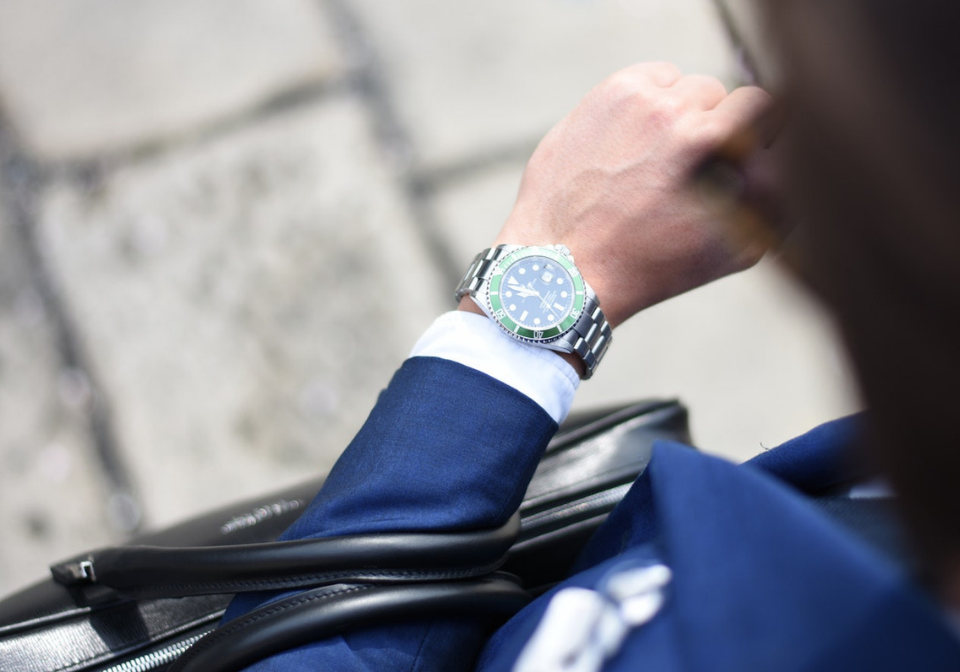Why are highly valuable Ultra Luxury watches way more expensive than lesser Luxury watches? Consider these four basic elements when distinguishing Ultra luxury from Luxury watches:
Brand – Complications – Decorations – Experimentation
All else may just be ancillary: including encasing a movement in 18K gold.
Brand
Some watches become Ultra or High-End Luxury because they are made by a famous brand, when in fact they would typically be treated merely as Luxury pieces. There are major horology brands that have high-end models regarded as Ultra Luxury watches, wholly because of brand – perception, often deemed reality, plays a significant role in the Ultra Luxury marketplace.
Promotions of limited edition Luxury watches may also increase a Luxury Watch’s value.
Complications
“Complications” is watch-speak for gears, wheels, and other mechanical parts that make up a watch’s mechanism. To measure things more than hours, minutes, and seconds, such as the date and day displays, requires complications. The more difficult and intricate the elements, the more complications needed, thus adding more value to the watch. For example: making a super thin watch incurs the necessity for more complications. Complications make an Ultra Luxury Watches more capable, and extend functionalities.
One of the most interesting complications is the tourbillon (French for “whirlwind”):
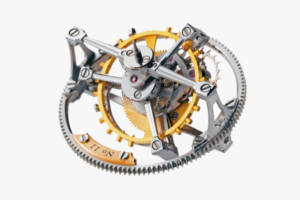
Photo: Greubel Forsey
Designed in the 1700s by famed watchmaker Abraham-Louis Breguet, when there were only pocket watches; Breguet found that gravity had faulty effects on the accuracy of his timepieces, which were mostly stored vertically in the user’s pocket, then stored on a table horizontally. Stuck in those vertical and horizontal positions put a strain on the hairspring inside the escapement, causing it to oscillate at a variable rate, affecting accuracy.
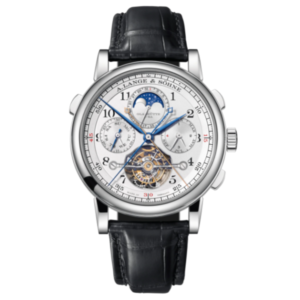 Breguet’s solution was to create an escapement always in a state of motion — the tourbillon — the escapement is housed in a rotating cage that, because of the constant motion, averages out the effects of gravity when the watch is in fixed positions. The tourbillon corrected the pocket watch, but wristwatches, with the wrist’s constant movement, naturally offer the same gravity-fighting effect as the tourbillon mechanism. It has been proven that tourbillons are not any more accurate than a traditional escapement on a wristwatch, and are in some cases even less so.
Breguet’s solution was to create an escapement always in a state of motion — the tourbillon — the escapement is housed in a rotating cage that, because of the constant motion, averages out the effects of gravity when the watch is in fixed positions. The tourbillon corrected the pocket watch, but wristwatches, with the wrist’s constant movement, naturally offer the same gravity-fighting effect as the tourbillon mechanism. It has been proven that tourbillons are not any more accurate than a traditional escapement on a wristwatch, and are in some cases even less so.
In spite of the tourbillon’s uselessness, they’ve remained prevalent in the Ultra Luxury watch market. Most Swiss-made examples start at around $40,000, and prices often break the six-figure barrier. Tourbillons are arguably one the most challenging movements to make by hand; the mechanism is tiny, weighing under a gram, usually crafted with more than 40 parts, finished by hand and made from lightweight metals like aluminum and titanium. Tourbillons require a special set of tools and extended time to manufacture.
A tourbillon chronograph in a single A. Lange & Söhne Tourbograph Pour le Merite requires 18 months to complete. Adding additional complications creates exceptionally complex and artistic timepieces, but these exquisite creations come at a significant cost.
Decorations
Decorations add distinctive artistic characteristics to an Ultra Luxury Watch. There may have limited influence on horological qualities; however, aesthetics play a crucial part in the Ultra Luxury Watch marketplace.
A unique form of decoration is skeletonization: A watchmaker skeletonizes a watch by carving away the metal from the bridges and plates, exposing the gears and levers that make a mechanical watch work. Watch aficionados love the detailed look of the movement, if not just the aesthetics – form following function.
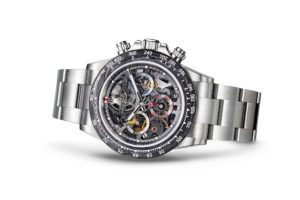 Skeletonization is precarious detailed labor. Bridges and plates hold a watch movement together – components are attached to the main plate and bridges are screwed on top to keep them in place. Without perfect exactness, tiny gears and pinions could become displaced or even break under slight pressure. Skill and precise calculations are required to avoid rendering the watch too fragile to function. Traditionally, carved-out components are decorated by engraving, a delicate form of metalwork. The movement is open-worked in modern versions, but the traditional scrolling motifs are replaced by simple beveled and polished surfaces. Color is often added with a PVD coating, adding a dramatic flair not found on vintage skeletonized watches. Open working and skeletonization are also useful tricks for slimming down movements since carving away the bridges and plates to the bare essentials eliminates extraneous metal.
Skeletonization is precarious detailed labor. Bridges and plates hold a watch movement together – components are attached to the main plate and bridges are screwed on top to keep them in place. Without perfect exactness, tiny gears and pinions could become displaced or even break under slight pressure. Skill and precise calculations are required to avoid rendering the watch too fragile to function. Traditionally, carved-out components are decorated by engraving, a delicate form of metalwork. The movement is open-worked in modern versions, but the traditional scrolling motifs are replaced by simple beveled and polished surfaces. Color is often added with a PVD coating, adding a dramatic flair not found on vintage skeletonized watches. Open working and skeletonization are also useful tricks for slimming down movements since carving away the bridges and plates to the bare essentials eliminates extraneous metal.
An example of a custom decorated Rolex Daytona is the Rolex Daytona La Montoya: Modified by an independent watchmaking workshop in Geneva Switzerland. The modification includes skeletonizing its bridges and performing an industrial grade beveled edging on every surface. It looks stunning – with a corresponding stunning price. (photo (above) – monochrome-watches.com)
Experimentation
Some of the most famous watch studios are using innovative and creative components in their manufacturing process to develop extremely complex horological instruments.
Richard Mille is one of the most celebrated of the experimental manufactures. Precise attention to the architecture of their parts, with specific characteristics such as lightness, strength and stability, tight lines, and high transparency. In concordance with maintaining a unique aesthetic that distinguishes the brand. Richard Mille emphasizes extreme technology – what they term: hyper-technology.
Richard Mille watches start at around $80,000 – and rise to several million dollars for some of his more exotic pieces.
This is the RM 50-03 McLaren F1 watch:
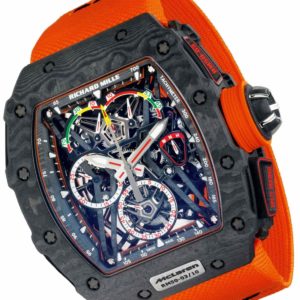
Photo: George Ong
These four essential elements (brand, complications, decorations, and experimentation) are not absolutes. The Ultra Luxury Watch market makes its own rules, and the lesser luxury market should be easily recognizable – like the differences in fashion between ready-to-wear and haute couture.
Call toll free: 1-866-475-5389

